Menopause? Really?
Menopause is a natural process that every woman goes through. During this phase of life, our bodies experience numerous hormonal changes. These can cause a variety of symptoms, ranging from minor discomforts to serious health problems. It's easy to google and quickly come across therapies, some of which sound a bit intimidating. Here, we want to give you an overview of which therapies work for which symptoms, what their advantages and disadvantages are, and who they are generally not suitable for. In any case, you should discuss each therapy in detail with your doctor and give each therapy time to take effect. Don't change medications too quickly without consulting your doctor.
But let's delve into the maze of therapies and get an overview of what can help with which symptoms.
#1 Hormone therapy (HRT)
Hormone replacement therapy (HRT) can be administered in various forms, including oral (tablet form), transdermal (patches, gels), and vaginal (creams, suppositories). Oral HRT typically involves taking one pill per day, depending on the dosage and the specific preparation. There are both combined HRT (with estrogen and progesterone) and estrogen-only preparations; your doctor will explain the details.
- Easy to take: The pill can be easily integrated into everyday life.
- Efficacy: It effectively relieves common menopausal symptoms such as hot flashes, night sweats, sleep disturbances, and vaginal dryness.
- Protection against osteoporosis: Taking HRT can slow bone loss and thus reduce the risk of osteoporosis.
- Long-standing experience: Oral HRT is one of the most commonly prescribed forms of hormone replacement therapy and has a long history of clinical use.
Disadvantages of oral HRT:
- Increased risk of blood clots: Oral HRT may slightly increase the risk of thrombosis, stroke, and pulmonary embolism—particularly in women who smoke, are overweight, or have a history of blood clots.
- Liver stress: Because estrogen passes through the liver, it can affect the production of clotting factors and other substances. This makes it less suitable for women with certain liver diseases.
- Increased risk of breast cancer : Prolonged use of combined HRT (estrogen and progesterone) may increase the risk of breast cancer, particularly after more than 5 years of use.
- Side effects: Possible side effects include headache, nausea, breast tenderness, and mood swings.

Alternatives to oral administration :
- Lifestyle adjustments
- Transdermal therapy (patch, gel): Often preferred because it reduces the risk of blood clots and liver damage because it does not pass through the digestive tract.
- Vaginal preparations: Topical HRT (creams or suppositories) is particularly suitable for women who primarily suffer from vaginal dryness and discomfort during sexual intercourse.
- The decision to use a particular form of HRT should always be made in consultation with your doctor, based on individual health factors and preferences.
For whom is HRT not suitable?
|
If you have one or more of these risk factors |
|
|
Previous or active breast cancer |
Increased risk of breast cancer due to estrogen/progesterone therapy. |
|
Previous or active cancer of the uterus |
Estrogen can promote the growth of endometrial tissue. |
|
Thromboembolic diseases |
Increased risk of blood clots, thrombosis, strokes. |
|
Severe liver disease |
Liver cannot process hormones properly. |
|
Unexplained vaginal bleeding |
Unexplained bleeding must be clarified before starting HRT. |
|
Severe cardiovascular diseases |
Increased risk of heart attacks and coronary heart disease. |
|
Untreated hypertension |
HRT can further increase blood pressure. |
|
Migraine with aura |
Increased risk of stroke in migraine patients with aura. |
|
You are a smoker |
HRT increases the already increased risk of cardiovascular problems in women who smoke. |
|
Porphyria |
Symptoms may worsen due to hormones. |
It's important to discuss these contraindications with a doctor to find the safest treatment option during menopause. Now that you know what they mean, you can specifically address these issues during your doctor's appointment.
#2 Non-hormonal medications
Non-hormonal medications offer an alternative to HRT and are often used to treat menopausal symptoms such as hot flashes and mood swings. These include, in particular, SSRIs (selective serotonin reuptake inhibitors) and SNRIs (serotonin-norepinephrine reuptake inhibitors), which are also used to treat depression and anxiety.
Advantages of non-hormonal medications:
- No hormonal intervention: These medications offer an alternative for women who cannot or do not want to take HRT for medical reasons.
- Relief of hot flashes and night sweats: SSRIs and SNRIs have been shown to be effective in reducing hot flashes.
- Improve mental health: They can relieve mood swings and depressive symptoms that occur during menopause.
Disadvantages of non-hormonal medications:
- Side effects: Common side effects include nausea, headache, insomnia, and decreased sexual desire.
- Slow effect: It may take several weeks for the full effect to occur.
- Not sufficient for severe symptoms: These medications may not be as effective for severe physical symptoms of menopause, such as vaginal dryness.
Who are they not suitable for?
If you have one or more of these risk factors:
- Untreated depression: SSRIs/SNRIs should be monitored by a doctor, especially when used to treat mood swings and depression.
-
High blood pressure: Some medications should not be used in women with high blood pressure without medical supervision. Therefore, talk to your doctor about what would be best for you.
#3 Bone health supplements: Calcium, bisphosphonates, vitamin D
During and after menopause, estrogen levels drop, increasing the risk of osteoporosis and bone fractures. Calcium, vitamin D, and bisphosphonates are essential components for supporting and maintaining bone density during this phase of life.
Benefits of calcium, bisphosphonates and vitamin D:
- Calcium: Important for maintaining bone health and preventing bone loss (osteoporosis).
- Vitamin D: Promotes calcium absorption in the body and strengthens bones.
- Bisphosphonates: Drugs that slow bone loss and reduce the risk of fractures by improving bone density.
Disadvantages of calcium, bisphosphonates and vitamin D:
- Calcium: Excessive intake can increase the risk of kidney stones and heart disease.
- Bisphosphonates: Long-term use can lead to rare but serious side effects such as jaw necrosis and atypical femoral fractures.
- Vitamin D: Too much vitamin D can cause hypercalcemia, which can damage the kidneys and lead to other health problems.
Alternatives to supplementation:
- Lifestyle measures such as strength training: In addition to supplementation, regular weight-bearing exercises such as hiking, jogging and strength training are important to strengthen bones and prevent bone loss.
- HRT (hormone replacement therapy): In cases of severe osteoporosis, HRT can also slow bone loss by stabilizing hormone levels.
Who are they not suitable for?
If you have one or more of these risk factors:
- Kidney problems: Women with kidney problems should have their calcium and vitamin D intake carefully monitored, as an imbalance of minerals could damage the kidneys.
- Gastrointestinal disorders: Bisphosphonates can cause gastrointestinal disturbances, so they should only be used under medical supervision in women with sensitive stomachs or heartburn.
#4 Natural lifestyle interventions with blood sugar management (Hello Inside program)
Metabolism changes significantly during menopause, which can increase the risk of insulin resistance, weight gain, dementia, and type 2 diabetes. Programs like ours, which focus on better habits and encompass nutrition, exercise, stress management, and sleep hygiene , are crucial for well-being and symptom control during this phase of life. The Hello Inside program offers women a comprehensive approach that provides personalized recommendations based on real-time blood glucose data.
Benefits of lifestyle interventions:
- Weight control: An adapted diet and regular physical activity help to maintain weight stability, which is often difficult during menopause.
- Blood sugar management: The Hello Inside program uses continuous glucose monitoring (CGM) to track blood sugar fluctuations in real time. Based on this, you can adjust your diet and exercise to meet your body's new needs and immediately see your progress.
- Stress management and sleep improvement: Stress reduction and sleep hygiene strategies can help manage hormone-related sleep disturbances and stress during menopause.
- The therapy also addresses the more serious health risks that occur more frequently after menopause and has a lasting positive impact on quality of life.
- The therapy can be optimally combined with all other therapies.
- The therapy has no side effects , except that you will know more quickly how your body responds to certain changes and what works for you.
Disadvantages of lifestyle interventions:
- Requires discipline and commitment: Lifestyle interventions require long-term discipline and consistent implementation.
- Slower results: Unlike medications, changes in diet, exercise, and stress management take time to have their full effect on symptoms.
Who are they not suitable for?
- Irregular lifestyle: Women with highly unpredictable daily routines or high stress levels may have difficulty establishing the structure and discipline necessary for successful lifestyle interventions.
-
Severe insulin resistance or diabetes: Women with advanced insulin resistance or diagnosed diabetes may need additional medical support in addition to lifestyle interventions.
There is no right or wrong in therapies as long as you coordinate with your doctor
Menopause is a phase of life that every woman experiences differently. Once you know for sure that the symptoms are due to menopause, there are a variety of therapies that can be used consecutively or in parallel to provide symptom relief. The optimal therapy is unique to each woman. Natural lifestyle therapies are always a good starting point due to their gentle nature, and coaching also helps you identify more self-determined solutions for yourself over the course of your menopause.
The importance of natural therapies through lifestyle programs such as Hello Inside summarized:
- Effective lifestyle adjustments always represent a medically sensible accompanying measure to all other forms of therapy .
- Lifestyle interventions such as Hello Inside are the only form of therapy that effectively addresses the menopausal symptoms of weight gain and developing insulin resistance.
- Natural lifestyle interventions represent an effective, yet gentle initial form of therapy , which you can combine with hormone or non-hormone therapy and supplements over time to achieve improved results.
- If you are unsure whether you are in menopause, discuss your symptoms with your doctor first .
At a glance: Menopause symptoms and possible treatments:
|
symptom |
Hormone therapy (HRT) |
Non-hormonal medications |
Supplements for bone health |
Hello Inside |
|
Hot flashes |
✓ |
✓ |
X |
X |
|
Night sweats |
✓ |
✓ |
X |
✓ |
|
Mood |
✓ |
✓ |
X |
✓ |
|
Bone loss (osteoporosis) |
✓ |
X |
✓ |
✓ |
|
Weight gain |
X |
X |
X |
✓ |
|
Insulin resistance |
X |
X |
X |
✓ |
|
Vaginal |
✓ |
X |
X |
X |
|
Low energy/tiredness or difficulty concentrating |
✓ |
✓ |
✓ |
✓ |
Sources
Dormire, Sharon L et al.: Menopausal Hot Flash Frequency Changes in Response to Experimental Manipulation of Blood Glucose . Nursing Research 52(5):p 338-343 , September 2003.
Jull, Janet et al.: Lifestyle Interventions Targeting Body Weight Changes during the Menopause Transition: A Systematic Review, Journal of Obesity , May 26, 2014
Lumsden MA, Davies M, Sarri G, for the Guideline Development Group for Menopause: Diagnosis and Management (NICE Clinical Guideline No. 23). Diagnosis and Management of Menopause: The National Institute of Health and Care Excellence (NICE) Guideline ., JAMA Intern Med. 2016;176(8):1205–1206.
National health System UK (NHS), Alternatives to hormone replacement therapy (HRT), NHS online database
Støer, NC et al.: Menopausal hormone therapy and breast cancer risk: a population-based cohort study of 1.3 million women in Norway . British Journal of Cancer 131, 126–137 (2024)
Wu O.: Postmenopausal hormone replacement therapy and venous thromboembolism, Gender Medicine 2005;2 Suppl A:S18-27
Xu L, et al.: The Hepatoprotective and Hepatotoxic Roles of Sex and Sex-Related Hormones, Frontiers in Immunology 2022 Jul 4;13:939631





